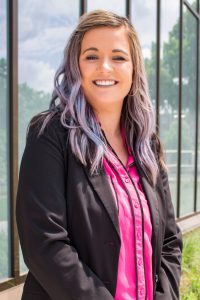
The Journey Begins
Excitement, nerves, and eagerness filled the minds of education doctoral students as they arrived on the first day of academic residency. Students met face-to-face for the first time, kindling the relationships they had already begun to develop in online meetings and conversations. Relationships and fostering a sense of community among cohort members and with faculty helps doctoral students maintain persistence (Zahl, 2015). Programs of this caliber are not easy, but with the support, guidance, and positivity provided by faculty and fellow cohort members, nobody is alone in this journey.
Zahl, S. (2015). The impact of community for part-time doctoral students: How relationships in the academic department affect student persistence. International Journal of Doctoral Studies, 10, 301-321.
Problem of Practice
Lack of desire to learn and low student engagement in classrooms is a cause for concern (Northey, Bucic, Chylinski, & Govind, 2015). Students struggle to stay engaged with traditional teaching styles, which are teacher-led. With classroom instruction shifting to student-centered learning rather than teacher-led instruction, opportunities arise to recognize and accept students with various learning styles (Lai & Hwang, 2016). Students have the chance to self-regulate their learning by working at their own pace and deciding how they want to learn by using methods such as project-based learning, flipped classrooms, group work, and online classes. Teachers serving as mentors, not just instructors, transform a classroom into a team of students working collectively with the instructor, which creates an environment conducive to diverse student needs.
Lai, C. L., & Hwang, G. J. (2016). A self-regulated flipped classroom approach to improving students’ learning performance in a mathematics course. Computers & Education, 100, 126-140. doi: 10.1016/j.compedu.2016.05.006
Northey, G., Bucic, T., Chylinski, M., & Govind, R. (2015). Increasing student engagement using asynchronous learning. Journal of Marketing Education, 37(3), 171-180. doi: 10.1177/0273475315589814
Research Questions
Students who believe skills and abilities develop and who are open to learning self-regulatory strategies are more likely to benefit from classroom tools (Lin-Siegler, Dweck, & Cohen, 2016). Self-regulated learners develop skills such as setting goals, planning to accomplish tasks and reflecting on processes (Loyens, Magda, & Rikers, 2008; Kim, Wang, Ahn, & Bong, 2015). Reflection and self-assessment by the teacher and the students creates an active learning environment (Chang, Liang, Shu, Tseng & Lin, 2016)
RQ1: How do students perceive the benefits of self-regulated learning strategies on academic outcomes?
RQ2: How have self-regulated learning strategies affected student academic outcomes?
RQ3: How have self-regulated learning strategies impacted student lives?
Chang, C. C., Liang, C., Shu, K. M., Tseng, K. H., & Lin, C. Y. (2016). Does using e-portfolios for reflective writing enhance high school students’ self-regulated learning? Technology, Pedagogy and Education, 25(3), 317-336. doi: 10.1080/1475939X.2015.1042907
Kim, D. H., Wang, C., Ahn, H. S., & Bong, M. (2015). English language learners’ self-efficacy profiles and relationship with self-regulated learning strategies. Learning and Individual Differences, 38, 136-142. doi: 10.1016/j.lindif.2015.01.016
Lin-Siegler, X., Dweck, C. S., & Cohen, G. L. (2016). Instructional interventions that motivate classroom learning. Journal of Educational Psychology, 108(3), 295. doi: 10.1037/edu0000124
Loyens, S. M., Magda, J., & Rikers, R. M. (2008). Self-directed learning in problem-based learning and its relationships with self-regulated learning. Educational Psychology Review, 20(4), 411-427. doi: 10.1007/s10648-008-9082-7